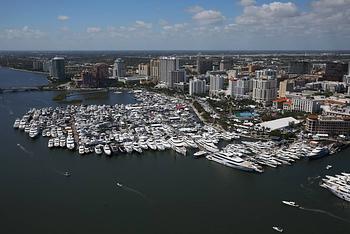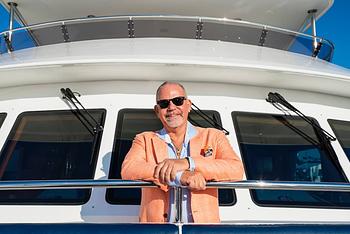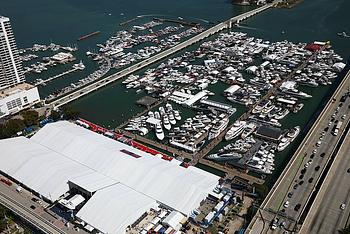Look around most any marina with sailboats and you’ll notice a very different picture to a decade or two back. Instead of row upon row of monohulls, catamarans are vying for space. In fact, the catamaran market is booming across the globe as both long-range sailors and short-term charterers have fallen for the stability, space, and speed of a multihull. Why, after centuries of classic monohulls gracing our oceans, are we seeing such a big move to cats, and will the trend inevitably continue?

Catamaran Sales Are on the Rise
According to Grand View Research, the global catamaran market size was worth USD 1.35 billion in 2021 and is expected to expand at by 5.8% from 2022 to 2030. And it’s the medium sized cats (30 to 50 feet) that have been dominating sales in recent years with 38% of the market. Small cats follow closely behind.
All across the world, the sales of catamarans are on an upward trajectory, and we’re seeing the biggest rise in Europe—36.7% of the market in 2021—and that’s most likely due to a combination of the growing number of high-net-worth individuals as well as increasing popularity of water sports generally. Interestingly, however, the charter market in Europe seems to be slower to make the shift to catamarans, perhaps to space constraints in some marinas. Over in the Caribbean and Bahamas, the cats dominate thanks to their shallow drafts and spacious layouts (more on the charter market later).
The Benefits of Catamarans
There are many different types of sailboats and while there is a huge rise in the number of cats on the seas, they are still far outnumbered by monohulls. Yet the tide is certainly changing, and there is an ever-increasing number of sailors switched on by the benefits that catamarans offer. What are the positive attributes of catamarans that are luring so many to make the change?
- Cats offer more space: Twin-hull boats have approximately 1.2 times the space of a monohull in the same length boat. So if you’re sailing in a 40-foot cat, you’ll have the space that a 50-foot monohull can offer.
- They have an appealing layout: By having two hulls, catamarans offer a unique layout with most cabins located in the hulls, while the bridgedeck provides a spacious living area.
- They are fast: The two narrow hulls means cats can be faster than monohulls when sailing in a straight line (although that’s not always the case).
- They are stable: Cats are popular with those who don’t enjoy the rocking and tilt of a monohull as they sail with much less heel.
- They are virtually unsinkable: With two hulls, catamarans are far less likely to capsize than their monohull counterparts, and the two hulls means the chances of them sinking are extremely low.
- They are light: Most of the living space is above the waterline on a catamaran, and they typically offer panoramic views and lots of natural light.
- They have a shallower draft: Shoal draft means more opportunity to get close to shore and explore coves and beaches you couldn’t reach with a deeper-draft monohull of similar length.
Read our articles on Catamaran vs Monohull: The Great Debate and Catamaran vs Trimaran: Choosing the Perfect Multihull Vessel for more on the pros and cons.

Catamarans Are Becoming the Popular Choice for Charter
There are two clear groups leading the way in the huge growth in catamarans sales—bluewater sailors and charter companies—and having looked at the benefits of multihulls it’s easy to see why. Charter companies, especially those offering bareboat or skippered charters, have been making the switch for years, offering vessels that are beautifully suited to family and couples holidays at sea, as well as guests who may be less accustomed narrow hulls and moving about underway on a tilted deck.
Luxurious full-height cabins offer more privacy because they’re often in different hulls, plus huge outdoor decks and lounging areas have obvious appeal. Then there’s the spacious living areas and full-sized galleys with large windows that are on the same level as the after cockpit, providing enormous social spaces and plenty of room for gatherings.
In the Caribbean, the Bahamas and parts of the Pacific, cats dominate due to their big decks for soaking up the sun and their shallow drafts for accessing beaches and coves. While you’ll easily find catamarans for charter in Europe, in countries such as Greece or Croatia, monohulls still dominate the market.
Why major charter companies are making the switch
When you consider that a 40-foot catamaran can fit four cabins, it’s no wonder that companies such as The Moorings, one of the world’s top bareboat charter agencies, sing the praises of catamarans. The Moorings partners with Robertson & Caine, a South African yacht builder whose award-winning cats offer cutting-edge design and forward-thinking technology to create boats purpose-designed for chartering. Features such as an expansive flybridge, ease of maneuvering, and space for en-suite cabins are just the beginning of the appeal.
Another big player in the bareboat and charter industry is Sunsail, who offer catamarans ranging in size from 38 to 48 feet built by Robertson & Caine and Lagoon Catamarans. They describe the benefits as an “impeccable balance between performance and maneuverability,” with their global fleet offering cats in the Caribbean, Americas, Mediterranean, and farther afield in more exotic locations such as the Seychelles and Tahiti.

Why Choose a Catamaran for Bluewater Cruising?
The idea of setting sail for long periods of time, of exploring the wonders of the world and creating memories to last a lifetime is something that is attracting more and more sailors. And catamarans are fast becoming a popular choice of floating home for these bluewater expeditions. From the huge amounts of living space to the smoother ride, their benefits are well-suited to long-range sailing. Consider the advantages of having the saloon and galley on the same level as the bridge when you’re cruising across oceans, or the considerable extra storage space aboard a catamaran compared to a monohull of the same length.
The average ocean-crossing catamaran is 40 to 45 feet long, which is the optimum length to allow designers to add a host of amenities such as full-sized kitchens, separate dining areas and expansize deck spaces. In addition, catamarans are considered virtually unsinkable because of their twin hulls and offer good passagemaking speeds, and it’s clear why many bluewater sailors are choosing multihulls.
Investing in a bluewater catamaran; the cost of owning a multihull
When it comes to price, catamarans cost more than a monohull of the same size. But while they might be the same length, they’re certainly not, as we’ve seen, the same size. A catamaran doesn’t just have more internal and external space, but it also has double the equipment than a monohull; two engines, two rudders, two hulls. Slips also cost more as a cat takes up double the amount of space of the same-sized monohull. However, when it comes to fuel, the cats win on efficiency. With shallow drafts and a lighter weight, they offer excellent fuel efficiency compared to monohulls.

Who Are the Major Players in the Catamaran Industry?
The catamaran industry is still relatively small compared to that of monohulls, with a relatively small number of builders constructing the majority of the boats sold, and several smaller builders contributing to advances in design and technology. (In addition to sail cats, the number and variety of power catamarans is evolving quickly, too.). Major charter companies such as The Moorings also order a large number of customized catamarans at builders such as Robertson & Caine and Lagoon and sell them to private owners as part of their yacht management programs, chartering them when not in use by the owners. There is no best sailing catamaran on the market, but there are a huge number of design approaches, and each company offers a range of models and layouts. These can be optimized for an owner sailing with family and friends, or for the charter market, where there’s a demand for multiple cabins. Ten of the best-known catamaran manufacturers (in alphabetical order) include:
- Catana
- Excess
- Fountaine-Pajot
- Gunboat
- Gemini
- Lagoon
- Leopard/Robertson & Caine
- Nautitech
- Outremer
- Seawind
Considering buying a catamaran? Check out the new and used catamarans for sale all across the world on Rightboat.
Related Articles and Guides
16th Apr 2024
17 Top Boat Shows to Visit in the Year Ahead
28th Feb 2024
Palm Beach International Boat Show
23rd Feb 2024
Rightboat Interview: Talking Long Range Cruising Yachts with Jeff Druek
8th Feb 2024





